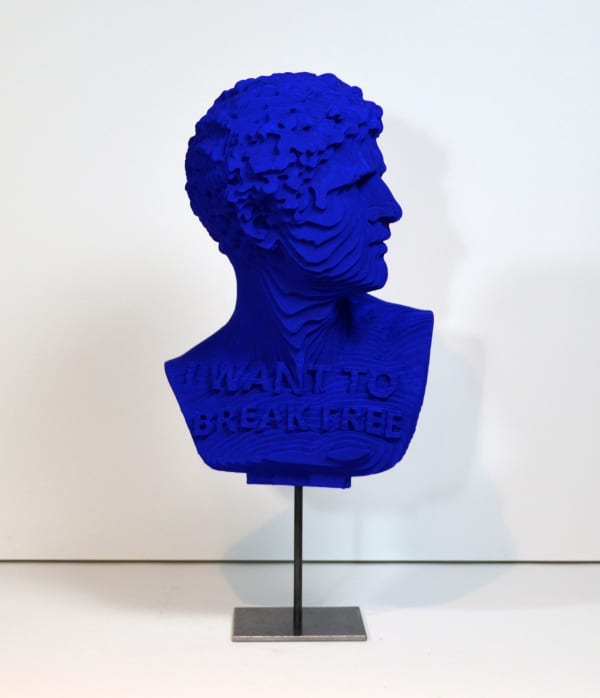-
Overview
Combining bright and pop colours with classical shapes, Daniele Fortuna creates a bridge between past and present.
Daniele Fortuna, artist born in Milan in 1981, since his early teenage, thanks to his passion for art, visited artist studios and art galleries among the most important of the city. He studied at the IED (European Institute of Design) in Milan, cultivating a strong interest in art and design.
He then moved for study and work in Ireland, in the south-east, near Dublin. There he worked in a lighting studio, where his interest in wood, the material that will be the foundation of his sculptures, was born. From the technique of carving, wood could in fact be composed in different shapes and patterns allowing the artist to give plastic shape to his ideas.
After finishing his studies in Ireland, he returned to Italy and began to create his first works. His art began to take shape and he created his first works in wood, paintings formed by wooden pieces shaped, coloured and then assembled like parts of a puzzle. Later he will move on to three-dimensional compositions, at first subjects from the animal world and then icons of the classical Greek-Roman combined with colours and traits of contemporary Pop.Fortuna's sculptures have as their starting point classical subjects, Greco-Roman busts that are recreated in wood, with a technique that juxtaposes several staggered levels, almost recalling a digital reproduction.
In addition, a wide range of pop and contemporary iconography invades the works, drawing from the works of big names, such as Maurizio Cattelan and Takashi Murakami, to the logos of famous fashion designers; from world-famous brands to characters from cartoons, comics and films; from famous people, such as Albert Einstein, to references to the world of music, in particular that of Queen.
Combining bright and pop colours with classical shapes, he creates a bridge between past and present, bringing classic subjects back to their original form. Originally, in fact, the very statues of classicism were coloured but, for centuries, were mistakenly believed to be white due to the deterioration of the original pigments. In a way, Daniele Fortuna implements a return to the past through contemporaneity.
-
Series

Daniele Fortuna
Ancient Love, 2023Acrylic on wood24 x 15 3/4 x 8 5/8 in
61 x 40 x 22 cmUniqueSeries: Modern BaroqueCopyright The ArtistExhibitions-

Daniele Fortuna
Modern Baroque March 25 - April 23, 2021On Thursday March 25th, we are excited to present a new series with Daniele Fortuna titled Modern Baroque. The series features an exclusive selection of editioned and unique sculptures inspired...Read more -

Daniele Fortuna
Colormination Series May 28 - June 26, 2020On May 27th, 2020 we are excited to present Daniele Fortuna’s most iconic series - Colormination. Featuring an exclusive selection of 20 unique sculptures, Colormination turns the renaissance sculpture inside...Read more
News



